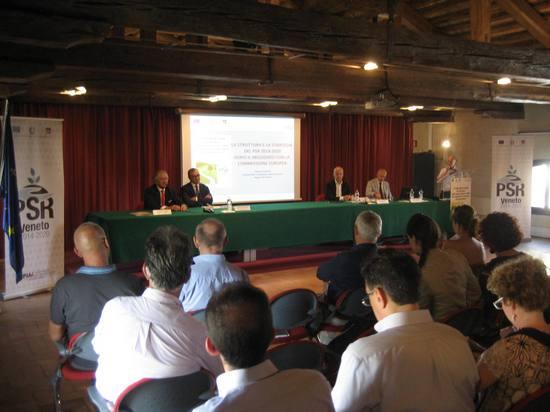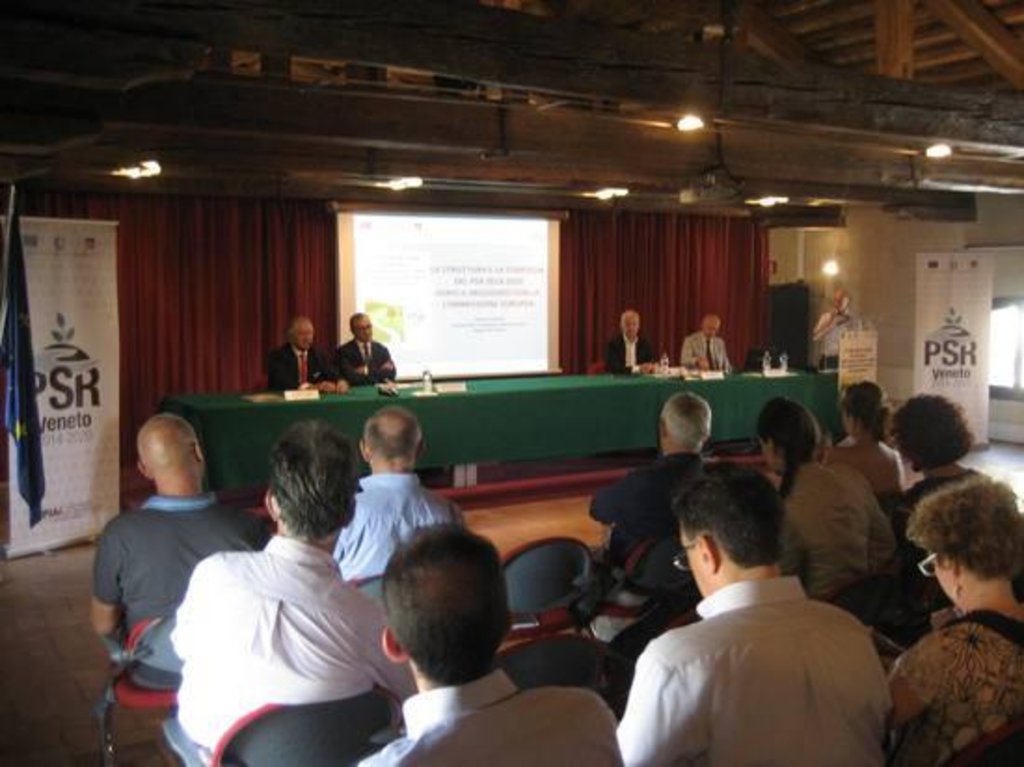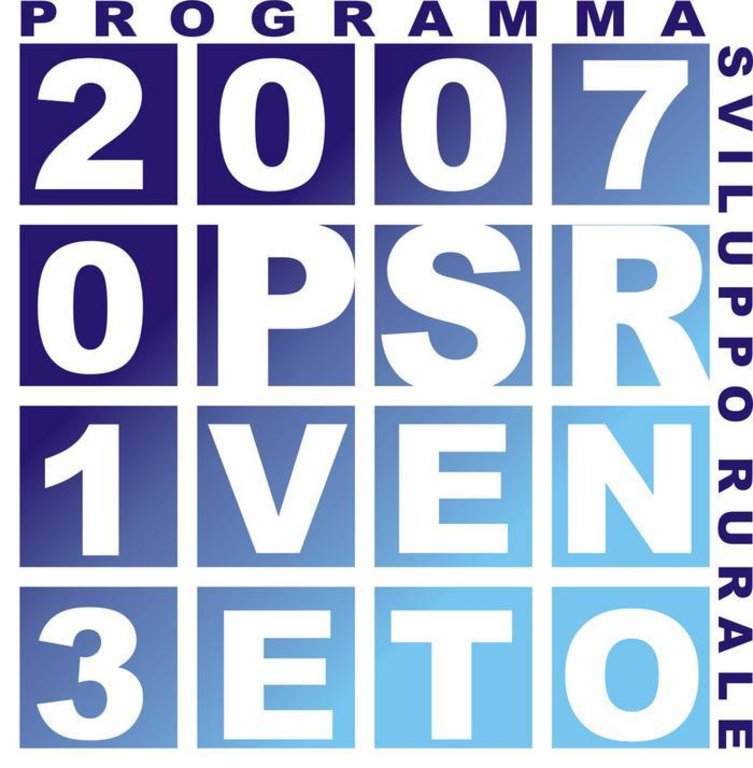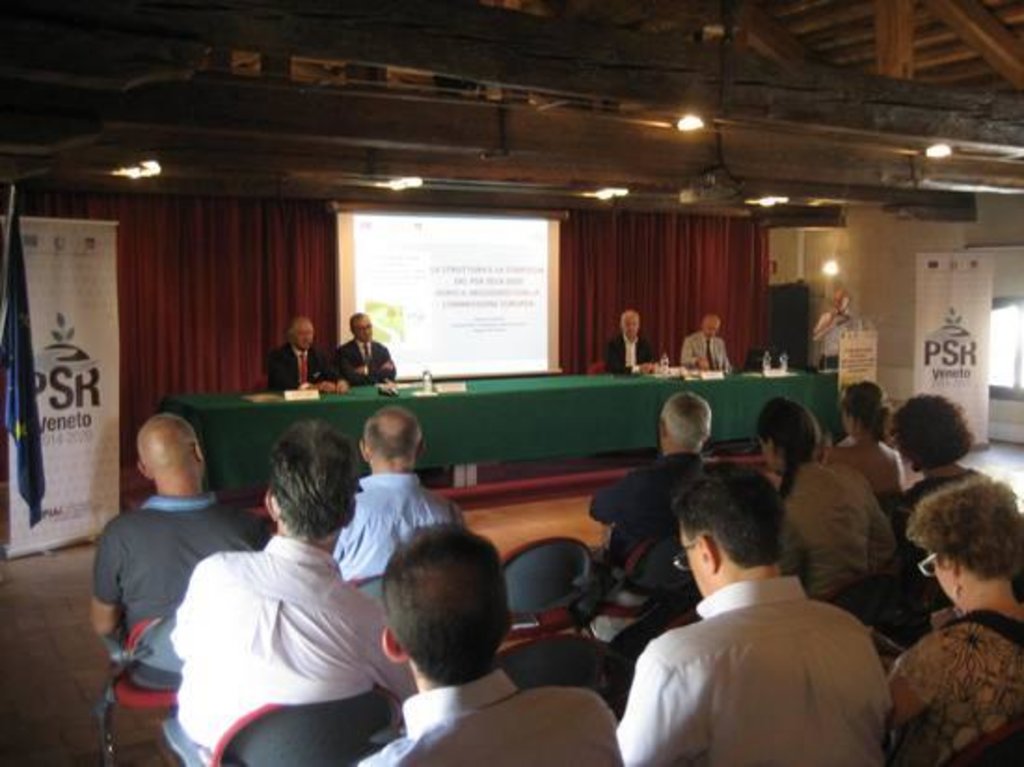Rural development programme in the Veneto region [Italie]
- Création :
- Mise à jour :
- Compilateur : Nicola Dal Ferro
- Rédacteur : –
- Examinateur : Fabian Ottiger
Programma di sviluppo rurale in Veneto
approaches_2598 - Italie
Voir les sections
Développer tout Réduire tout1. Informations générales
1.2 Coordonnées des personnes-ressources et des institutions impliquées dans l'évaluation et la documentation de l'Approche
Spécialiste GDT:
Morari Francesco
DAFNAE - University of Padova
Italie
Nom du projet qui a facilité la documentation/ l'évaluation de l'Approche (si pertinent)
Preventing and Remediating degradation of soils in Europe through Land Care (EU-RECARE )Nom du ou des institutions qui ont facilité la documentation/ l'évaluation de l'Approche (si pertinent)
University of Padova (UNIPD) - ItalieNom du ou des institutions qui ont facilité la documentation/ l'évaluation de l'Approche (si pertinent)
Programma Sviluppo Rurale 2003-2017 - Italie1.3 Conditions relatives à l'utilisation par WOCAT des données documentées
Quand les données ont-elles été compilées (sur le terrain)?
22/04/2015
Le compilateur et la(les) personne(s) ressource(s) acceptent les conditions relatives à l'utilisation par WOCAT des données documentées:
Oui
1.4 Références au(x) questionnaire(s) sur les Technologies de GDT
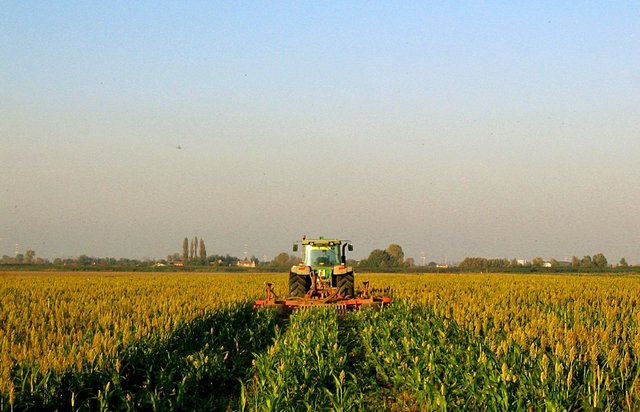
Continuous soil cover on croplands [Italie]
Maintenance of continuous soil cover; alternating crops and cover crops as a practice to improve soil quality and reduce diffuse agricultural water pollution
- Compilateur : Nicola Dal Ferro

Agroforestry system [Italie]
Silvo-arable systems for production of annual crops on tree plots
- Compilateur : Nicola Dal Ferro
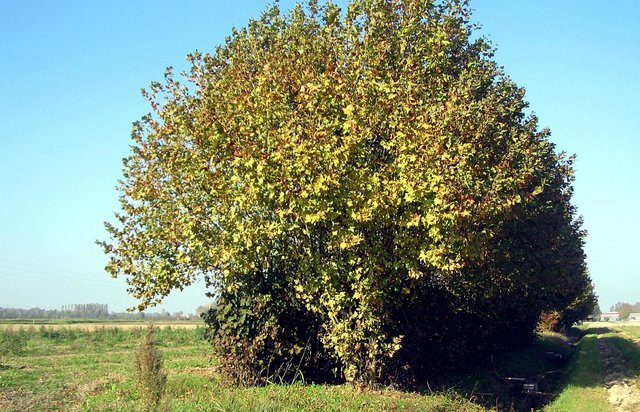
Vegetated buffer strips [Italie]
Buffer vegetation of agricultural land bordering to prevent nonpoint surface water pollution and soil erosion
- Compilateur : Nicola Dal Ferro
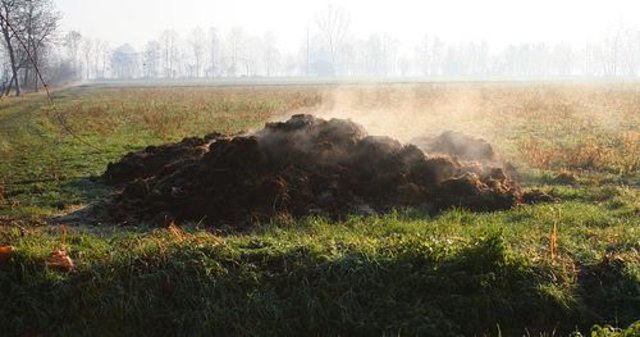
Re-introduction of organic amendments in croplands [Italie]
Re-introduction of biosolids to improve fertility of mineral soils
- Compilateur : Nicola Dal Ferro
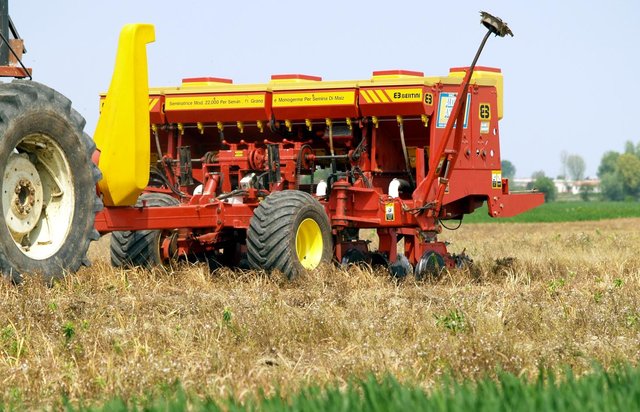
Conservation agriculture [Italie]
Sustainable crop production and residue management under no-tillage to improve soil fertility and increase environmental benefits
- Compilateur : Nicola Dal Ferro
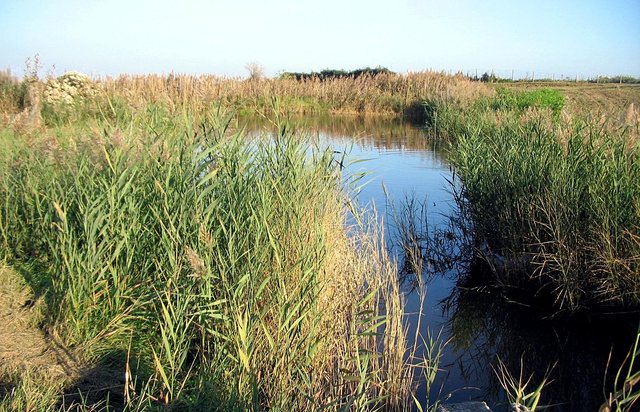
Wetland system [Italie]
Vegetated water basins for the control of diffuse pollution
- Compilateur : Nicola Dal Ferro
2. Description de l'Approche de GDT
2.1 Courte description de l'Approche
Developing rural areas in the Veneto region through sustainable land management policies
2.2 Description détaillée de l'Approche
Description détaillée de l'Approche:
Aims / objectives: The objective of the Rural Development Programme (RDP) is to improve the farmers' activity by addressing economic, environmental and social challlenges. In this context, the RDP aims to grow the rural economy as well as improve the agro-environment. This is achieved by economically supporting: a) the multifunctionality of agriculture (e.g. crop production, natural environment, tourism etc.); b) the renovation of agriculture sector towards more efficient and competitive productive systems; c) the communities living and working in rural areas.
Methods: The Rural Development Programme is carried out through subsidies to farming practices following a cross-compliance principle. As a result, a combination of 'baseline' conservation measures with the RDP ones must be applied to achieve subsidised conservation measures.
Role of stakeholders: The level of subsidies is estimated on input or maintenance costs. Moreover, the yield loss is also taken into account due to implementation of some measures. These estimates were obtained through consultation among stakeholders, including farmer organisations, public enterprises and governments.
Other important information: The Rural Development Programme (RDP) in the years 2007-2013 was structured in four axes, corresponding to four lines of action: a) Improvement of competitiveness of the agricultural and forestry sector; b) Improvement of environment and rural areas; c) Improvement of quality of life and economic diversification in rural areas; d) Implementation of strategies for the local development.
2.3 Photos de l'approche
2.5 Pays/ région/ lieux où l'Approche a été appliquée
Pays:
Italie
Région/ Etat/ Province:
Italy
Autres spécifications du lieu :
Veneto region
2.6 Dates de début et de fin de l'Approche
Indiquez l'année de démarrage:
2007
Date (année) de fin de l'Approche (si l'Approche n'est plus appliquée):
2013
2.7 Type d'Approche
- fondé sur un projet/ programme
2.8 Principaux objectifs de l'Approche
The Approach focused mainly on SLM with other activities (fostering the competitiveness of agriculture; knowledge transfer; economic development in rural areas)
Rural development Programme (RDP) aims to improve both the socio-economic situation of rural areas as well as the agro-environmental quality. Main line of actions involve: a) increase of competitiveness of the agricultural and forestry sector; b) increase of environmental quality in rural areas; c) economic diversification of rural areas to promote a better quality of life.
The SLM Approach addressed the following problems: In the last decades, the over-simplification of agro-ecosystems due to intensive monoculture and high mechanisation led to reduced biodiversity, increased land degradation and water pollution and finally vulnerability of agroecosystems. A general low farm size and fluctuating commodity prices led to a reduction of incomes and inadequate generational turnover. These factors drove small farmers out of the market, especially in marginal areas, where the phenomenon has been associated to land abandonment (especially in hilly and mountainous areas).
2.9 Conditions favorisant ou entravant la mise en œuvre de la(des) Technologie(s) appliquée(s) sous l'Approche
normes et valeurs sociales/ culturelles/ religieuses
- entrave
Land users are seldom tied to traditional systems and new technologies are difficulty adopted.
Treatment through the SLM Approach:
disponibilité/ accès aux ressources et services financiers
- entrave
Fundings are sometimes very few for implementation of technologies
Treatment through the SLM Approach:
cadre institutionnel
- entrave
Treatment through the SLM Approach:
cadre juridique (régime foncier, droits d'utilisation des terres et de l'eau)
- favorise
The existing land ownership, land use rights / water rights moderately helped the approach implementation: The RDP is seen as an opportunity for the development of the rural areas and the adoption of SLM measures is fostered
- entrave
Treatment through the SLM Approach:
connaissances sur la GDT, accès aux supports techniques
- entrave
Lack of expertise and technical skills for technology implementation
Treatment through the SLM Approach:
charge de travail, disponibilité de la main-d'œuvre
- entrave
Treatment through the SLM Approach:
3. Participation et rôles des parties prenantes impliquées dans l'Approche
3.1 Parties prenantes impliquées dans l'Approche et rôles
- exploitants locaux des terres / communautés locales
Difference between men and women because employees in the agriculture sector are traditionally men
- Spécialistes de la GDT/ conseillers agricoles
- gouvernement local
- gouvernement national (planificateurs, décideurs)
- organisation internationale
Si plusieurs parties prenantes sont impliquées, indiquez l'organisme chef de file ou l'institution responsable:
The RDP is adopted by regional government, but also following the requests and the needs of land users.
3.2 Participation des exploitants locaux des terres/ communautés locales aux différentes phases de l'Approche
| Participation des exploitants locaux des terres/ communautés locales | Spécifiez qui était impliqué et décrivez les activités | |
|---|---|---|
| initiation/ motivation | interactive | |
| planification | soutien extérieur | |
| mise en œuvre | passive | |
| suivi/ évaluation | aucun | |
| Research | interactive |
3.4 Prises de décision pour la sélection de la Technologie/ des Technologies
Indiquez qui a décidé de la sélection de la Technologie/ des Technologies à mettre en œuvre:
- les responsables politiques/ dirigeants
Expliquez:
Decisions on the method of implementing the SLM Technology were made by mainly by SLM specialists with consultation of land users
4. Soutien technique, renforcement des capacités et gestion des connaissances
4.1 Renforcement des capacités/ formation
Une formation a-t-elle été dispensée aux exploitants des terres/ autres parties prenantes?
Oui
Spécifiez qui a été formé:
- exploitants des terres
- personnels/ conseillers de terrain
Formats de la formation:
- entre agriculteurs (d'exploitants à exploitants)
- zones de démonstration
- réunions publiques
- cours
Thèmes abordés:
Mainly training on technical implementation of the technology, access to finance and project planning.
4.2 Service de conseils
Les exploitants des terres ont-ils accès à un service de conseils?
Oui
Spécifiez si le service de conseils est fourni:
- dans des centres permanents
Décrivez/ commentez:
Name of method used for advisory service: Authorised advisory services, public and private; Key elements: Objectives, Project design, Administrative support
Advisory service is quite adequate to ensure the continuation of land conservation activities
4.3 Renforcement des institutions (développement organisationnel)
Des institutions ont elles été mises en place ou renforcées par le biais de l'Approche?
- oui, modérément
Spécifiez à quel(s) niveau(x), ces institutions ont été renforcées ou mises en place:
- local
4.4 Suivi et évaluation
Le suivi et l'évaluation font ils partie de l'Approche? :
Oui
Commentaires:
bio-physical aspects were monitored by government through observations
bio-physical aspects were monitored by government through measurements
management of Approach aspects were monitored by government through observations
There were few changes in the Approach as a result of monitoring and evaluation: Ameliorations in the calls to fit requirements and possible applications. (e.g. more adequate finacial compensations; administrative simplifications, etc.)
There were no changes in the Technology as a result of monitoring and evaluation
4.5 Recherche
La recherche a-t-elle fait partie intégrante de l’Approche?
Oui
Spécifiez les thèmes:
- économie/ marketing
- écologie
5. Financement et soutien matériel externe
5.1 Budget annuel de la composante GDT de l'Approche
Si le budget annuel précis n'est pas connu, indiquez une fourchette:
- > 1 000 000
Commentez (par ex. principales sources de financement/ principaux bailleurs de fonds):
Approach costs were met by the following donors: local government (district, county, municipality, village etc): 100.0%
5.2 Soutiens financiers/ matériels fournis aux exploitants des terres
Les exploitants des terres ont-ils reçu un soutien financier/ matériel pour la mise en œuvre de la Technologie/ des Technologies?
Oui
5.3 Subventions pour des intrants spécifiques (incluant la main d'œuvre)
- équipement
| Spécifiez les intrants subventionnés | Dans quelle mesure | Spécifiez les subventions |
|---|---|---|
| machines | en partie financé | |
| outils | en partie financé | |
- intrants agricoles
| Spécifiez les intrants subventionnés | Dans quelle mesure | Spécifiez les subventions |
|---|---|---|
| semences | en partie financé | |
| fertilisants | en partie financé | |
- matériaux de construction
| Spécifiez les intrants subventionnés | Dans quelle mesure | Spécifiez les subventions |
|---|---|---|
| pierres | en partie financé | |
| bois | en partie financé | |
- infrastructures
| Spécifiez les intrants subventionnés | Dans quelle mesure | Spécifiez les subventions |
|---|---|---|
| routes | en partie financé | |
| écoles | en partie financé | |
5.4 Crédits
Des crédits ont-ils été alloués à travers l'Approche pour les activités de GDT?
Oui
6. Analyses d'impact et conclusions
6.1 Impacts de l'Approche
Est-ce que l'Approche a aidé les exploitants des terres à mettre en œuvre et entretenir les Technologies de GDT?
- Non
- Oui, un peu
- Oui, modérément
- Oui, beaucoup
The RPD aims at improving SLM practices in the Veneto region with an economic support. Biodiversity, environmental and water quality, soil protection are key elements of RDP to support SLM practices.
Est-ce que l'Approche a autonomisé les groupes socialement et économiquement défavorisés?
- Non
- Oui, un peu
- Oui, modérément
- Oui, beaucoup
Did other land users / projects adopt the Approach?
- Non
- Oui, un peu
- Oui, modérément
- Oui, beaucoup
Whole around Italy and Europe the RDP was used as a tool for improving the environment and the quality of life in rural areas.
Did the Approach lead to improved livelihoods / human well-being?
- Non
- Oui, un peu
- Oui, modérément
- Oui, beaucoup
Economic support to farmers and land users for imrpoving the environmental quality led to improved human well-being for all the community.
Did the Approach help to alleviate poverty?
- Non
- Oui, un peu
- Oui, modérément
- Oui, beaucoup
6.2 Principale motivation des exploitants des terres pour mettre en œuvre la GDT
- augmenter la rentabilité/ bénéfice, rapport coûts-bénéfices
- paiements/ subventions
6.3 Durabilité des activités de l'Approche
Les exploitants des terres peuvent-ils poursuivre ce qui a été mis en œuvre par le biais de l'Approche (sans soutien extérieur)?
- incertain
Si non ou incertain, spécifiez et commentez:
Some technologies are adopted only on the basis of contributions that are provided. In the long-term, the technology could be abandoned if not funded anymore. As a result, some technologies are not economically sustainable.
6.4 Points forts/ avantages de l'Approche
| Points forts/ avantages/ possibilités du point de vue du compilateur ou d'une autre personne ressource clé |
|---|
| The approach has a holistic view for the environment and human-well being improvement by including and integrating several SLM practices. (How to sustain/ enhance this strength: Include more SLM measures ) |
6.5 Faiblesses/ inconvénients de l'Approche et moyens de les surmonter
| Faiblesses/ inconvénients/ risques du point de vue de l’exploitant des terres | Comment peuvent-ils être surmontés? |
|---|---|
|
Implementation of SLM due to the approach is time-consuming due to excessive bureaucracy |
Administrative simplification |
| Faiblesses/ inconvénients/ risques du point de vue du compilateur ou d'une autre personne ressource clé | Comment peuvent-ils être surmontés? |
|---|---|
| The adoption of some measures thanks to the approach is usually limited to the time in which there are subsidies, without | Maintain the subsidies and the approach for the longest possible time |
7. Références et liens
7.1 Méthodes/ sources d'information
- visites de terrain, enquêtes sur le terrain
- interviews/entretiens avec les exploitants des terres
7.2 Références des publications disponibles
Titre, auteur, année, ISBN:
Programma di sviluppo rurale per il veneto 2007-2013, Regione Veneto, 2007. Dipartimento Agricoltura e Sviluppo Rurale.
Liens et modules
Développer tout Réduire toutLiens

Continuous soil cover on croplands [Italie]
Maintenance of continuous soil cover; alternating crops and cover crops as a practice to improve soil quality and reduce diffuse agricultural water pollution
- Compilateur : Nicola Dal Ferro

Agroforestry system [Italie]
Silvo-arable systems for production of annual crops on tree plots
- Compilateur : Nicola Dal Ferro

Vegetated buffer strips [Italie]
Buffer vegetation of agricultural land bordering to prevent nonpoint surface water pollution and soil erosion
- Compilateur : Nicola Dal Ferro

Re-introduction of organic amendments in croplands [Italie]
Re-introduction of biosolids to improve fertility of mineral soils
- Compilateur : Nicola Dal Ferro

Conservation agriculture [Italie]
Sustainable crop production and residue management under no-tillage to improve soil fertility and increase environmental benefits
- Compilateur : Nicola Dal Ferro

Wetland system [Italie]
Vegetated water basins for the control of diffuse pollution
- Compilateur : Nicola Dal Ferro
Modules
Aucun module trouvé


